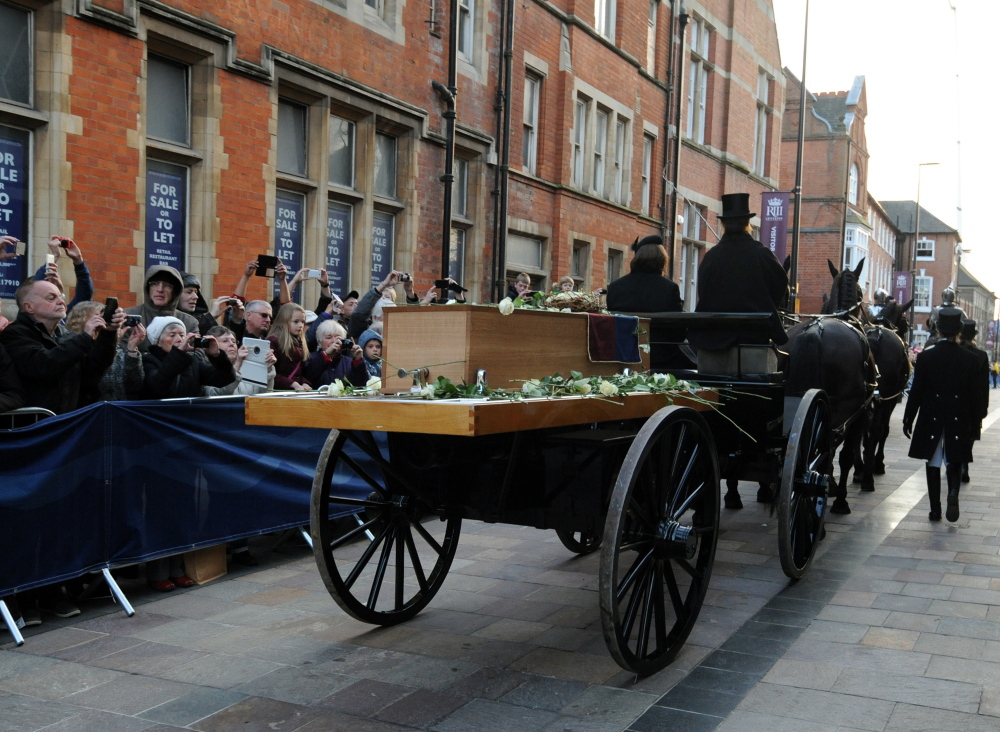LONDON — Richard III was finally getting the ceremony and honor a king deserves, 530 years after his ignominious death in battle.
Hundreds of people, including some in period costumes and armor, turned out in Leicestershire on Sunday to watch a procession carrying the remains of the medieval king whose bones were found in 2012 under a parking lot. The cortege made its way to Leicester Cathedral, where the monarch will be properly reburied.
Richard, the last Plantagenet king, was killed in battle against Henry Tudor in 1485 and buried hastily without a coffin in a long-demolished monastery.
His bones weren’t found until 2012, when archaeologists excavated them from a Leicester parking lot. DNA tests, bone analysis and other scientific scrutiny established that the skeleton belonged to the king.
On Sunday, a hearse carrying the monarch’s remains, sealed inside an oak coffin, processed through Leicestershire’s countryside to Bosworth, the battlefield where the monarch fell. Crowds lined the route of the cortege, and re-enactors in costume fired cannons in a 21-gun salute.
Michael Ibsen, a descendant of the monarch who built the coffin that carried Richard’s remains, was among academics and others who placed white roses on the casket during a short ceremony.
The coffin will lie in Leicester Cathedral, where it will be lowered into a tomb on Thursday.
The monarch was portrayed as a hunchbacked villain in Shakespeare’s play “Richard III,” though some historians say he was a relatively enlightened monarch whose name was besmirched by his opponents.
“Let us remember King Richard III: The good king. The warrior king,” said Phil Stone, chair of the Richard III Society.
Copy the Story LinkSend questions/comments to the editors.



Success. Please wait for the page to reload. If the page does not reload within 5 seconds, please refresh the page.
Enter your email and password to access comments.
Hi, to comment on stories you must . This profile is in addition to your subscription and website login.
Already have a commenting profile? .
Invalid username/password.
Please check your email to confirm and complete your registration.
Only subscribers are eligible to post comments. Please subscribe or login first for digital access. Here’s why.
Use the form below to reset your password. When you've submitted your account email, we will send an email with a reset code.